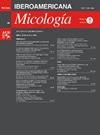从2012年ESCMID到2025年ECMM/ISHAM/ASM假丝达指南:主要差异和实际意义是什么?
IF 1.6
4区 生物学
Q4 MYCOLOGY
引用次数: 0
摘要
全球2025 ECMM/ISHAM/ASM念珠菌指南(全球念珠菌2025指南)的统一意味着从业者可以在一份文件中找到所有重要的主题,而在2012年,人们必须为每个子组查阅多篇论文。全球念珠菌2025指南保留了刺珠菌素作为侵袭性念珠菌病的一线治疗方法,同时纳入了新的药物——例如每周一次给药的rezafungin和治疗耐药感染的新型口服药物——以提供更加个性化的、以药物敏感性为导向的治疗。他们还建议在稳定的非中性粒细胞减少症患者中早期静脉到口服降压,并强调需要及时进行源头控制。此外,还更加注重管理新出现的耐药性(特别是耳念珠菌和耐唑假丝菌病),并根据当地流行病学和特殊患者群体制定预防和治疗策略。它使用GRADE系统提供了详细的证据分级建议,并明确介绍了新出现的病原体、耐药性、抗真菌管理和感染控制。《念珠菌2025》全球指南纳入了更广泛的公共卫生考虑和对资源有限环境的指导。本文章由计算机程序翻译,如有差异,请以英文原文为准。
From 2012 ESCMID to global 2025 ECMM/ISHAM/ASM Candida guidelines: What are the key differences & practical implications?
The unity of the global 2025 ECMM/ISHAM/ASM Candida guideline (global Candida 2025 guideline) means a practitioner can find all important topics in one document, whereas in 2012 one had to consult multiple papers for each subgroup. The global Candida 2025 guideline retains echinocandins as the first-line treatment for invasive candidiasis while incorporating new agents – such as rezafungin for once-weekly dosing and novel oral options for resistant infections – to offer more personalized, susceptibility-guided therapy. They also recommend an earlier intravenous-to-oral step-down in stable non-neutropenic patients, and emphasize the need for prompt source control. Additionally, there is a stronger focus on managing emerging resistance (notably with Candida auris and azole-resistant Candida parapsilosis) and tailoring prophylaxis and treatment strategies to local epidemiology and special patient populations. It provides detailed, evidence-graded recommendations using the GRADE system, with explicit sections on emerging pathogens, resistance, antifungal stewardship, and infection control. The global Candida 2025 guideline incorporates broader public health considerations and guidance on resource-limited settings.
求助全文
通过发布文献求助,成功后即可免费获取论文全文。
去求助
来源期刊

Revista Iberoamericana De Micologia
MYCOLOGY-
CiteScore
1.90
自引率
0.00%
发文量
17
审稿时长
81 days
期刊介绍:
Revista Iberoamericana de Micología (Ibero-American Journal of Mycology) is the official journal of the Asociación Española de Micología, Asociación Venezolana de Micología and Asociación Argentina de Micología (The Spanish, Venezuelan, and Argentinian Mycology Associations). The Journal gives priority to publishing articles on studies associated with fungi and their pathogenic action on humans and animals, as well as any scientific studies on any aspect of mycology. The Journal also publishes, in Spanish and in English, original articles, reviews, mycology forums, editorials, special articles, notes, and letters to the editor, that have previously gone through a scientific peer review process.
 求助内容:
求助内容: 应助结果提醒方式:
应助结果提醒方式:


